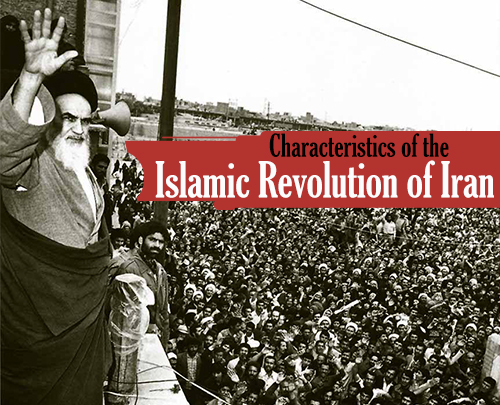The Islamic Revolution triumphed in Iran on 22nd Bahman (Feb. 11, 1979), under
the leadership of Imam Khomeini and participated by the overwhelming majority of
people. The revolution paved the way for establishment of the Islamic Republic
Government. All people took part in the revolution, and women played a vital
role there.
Women have devotedly played a crucial role in the Islamic Revolution by
uncovering the enemies' conspiracies and have been a firm support for the
society. They have been as active as men in all arenas and have contributed to
the growth of the Islamic Revolution. In some cases, they have involved in much
more important, active roles than men. They have been fighting not only directly
but also indirectly by encouraging their husbands and children. They have been
responsible in bringing up some strong, pious children to present the Islamic
society, which has always been critical to the Islamic Revolution.
Imam Khomeini used to say, «In the revolution, women have more rights than men.
»
Here you will read a brief but useful article once published in Tehran Times on
the different aspects of Islamic Revolution of Iran.
Participation in Political Processes
The extents of women's participation in the political processes of a country, or
the activities women undertake to achieve political objectives, are
characterized by a society's prevailing socio-economic status and its cultural
norms and values. The lack of interest on the part of many women in political
affairs does not necessarily reflect the existence of inequality between men and
women in a given society. In fact, absence of women's participation in politics
derives from a set of complex historical and social factors as well as from
their own particular position in society. Nearly all modern nation-states of the
world recognize equal rights for men and women in their respective
constitutions. Nevertheless, there are only a limited number of women who are
high ranking officials or hold political offices.
Women's participation in political processes in the Islamic Republic of Iran can
be evaluated at two distinct levels: mass participation and elite participation.
Political Participation at the Mass Level
Political participation of women at the mass level has been exhibited in the
process of the Islamic Revolution, in national elections, in the mobilization of
war-time resources, in demonstrations and marches to show opposition to, or
support for, different issues and in group meetings and associations.
Iranian women's efforts in the mobilization of the economy during the eight-year
imposed war remain a prominent example of political participation on the part of
women. Their tireless efforts behind the front-lines, their financial donations
and personal sacrifices as well as the encouragement they gave to the public to
partake directly and indirectly in the defense of the homeland helped in the
reversal of the tide of aggression. Women's mobilization units, which were
established in mosques and government organizations and factories in 1981, are
still active in the implementation of the country's reconstruction programs and
economic development as well as in areas of training, education, research,
sports and arts.
Political Participation at the Elite Level
At the elite level, women's participation and activities have extended into the
domains of the legislative, executive and judiciary branches as described later.
* Source: mahjubah magazine


















